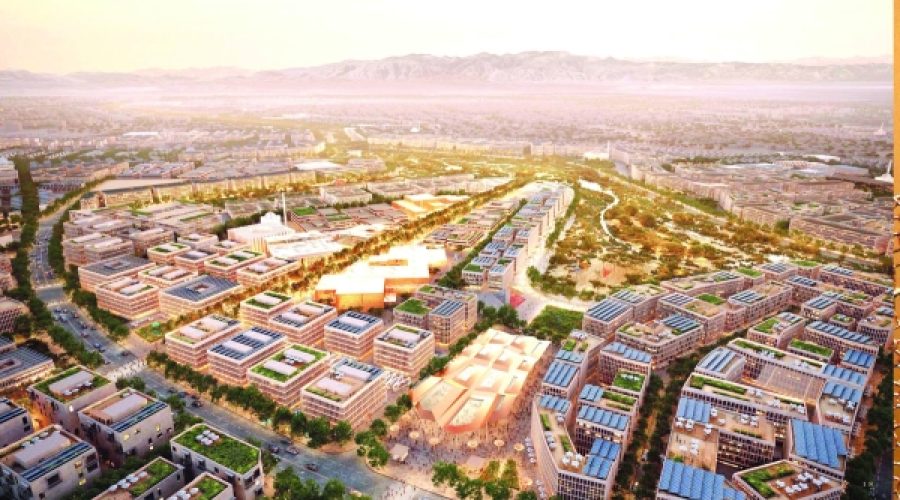6,986 New Residential Units in Sultan Haitham City: What This Means for Real Estate Investors in Oman
MUSCAT: The Ministry of Housing and Urban Planning has made significant strides in its inaugural year, establishing a strong foundation for Sultan Haitham City, Muscat’s flagship urban development. Officially launched on May 31, 2023, at Al Barakah Palace, the project has facilitated substantial agreements that aim to create 6,986 residential units, reflecting a strategic commitment to sustainable urban growth.
Among the notable agreements is a partnership with Al Siyabi International Group for the development of Neighborhood 10 (Hay Al Wafa). This ambitious initiative entails an investment of RO 208 million for 1,644 residential units across 770,137 square meters of land, with a built-up area of 415,860 square meters. In its first year, 513 units were sold, achieving an impressive 78% sales rate for the initial phases of Hay Al Wafa within three months.
Another significant agreement was reached with Dream Villa Development for Neighborhood 6B. With an investment of RO 6.6 million, this project will include 47 residential units on 33,579 square meters of land, featuring a built-up area of 20,005 square meters. Notably, 10 units were sold within the first month of the sales launch, demonstrating strong demand for the project.
Rumman International is developing Neighborhood 12 B&A, with a RO 204.9 million investment. This venture will comprise 1,001 residential units spread over 378,307 square meters of land, with a built-up area of 409,794 square meters, underscoring the scale of Sultan Haitham City’s residential offerings.
ASAAS is set to enhance the city’s housing capacity by developing Neighborhood 8, investing RO 184.2 million. This area will feature 1,333 residential units, covering 451,963 square meters of land and a built-up area of 368,449 square meters.
In Neighborhood A13, Sarooj Construction, with an investment of RO 31.6 million, will build 287 residential units on 86,053 square meters of land with a built-up area of 63,192 square meters, enhancing the diversity of housing options available.
Adrak Developers LLC will manage the development of Neighborhood 12D for RO 38.7 million, featuring 339 residential units on a 56,166 square meter plot, with a built-up area of 77,559 square meters.
Expanding the vision further, Al Ahly Sabbour Developments will oversee the construction of Neighborhoods 12C, 12E, and 12F, with a combined investment of RO 439 million. This expansive initiative will yield 2,219 residential units on 420,864 square meters of land, encompassing a total built-up area of 879,247 square meters.
Finally, tibiaan will develop Neighborhood 6A with an investment of RO 13.4 million, which will include 116 residential units on a 58,181 square meter site, featuring a built-up area of 31,543 square meters.
Looking ahead, the first phase (2024-2030) of Sultan Haitham City aspires to cover 7,045,455 square meters, providing housing for 50,091 residents within 9,924 housing units and a built area of 3,510,571 square meters. Ultimately, the overarching plan encompasses 14,800,000 square meters, aiming for 20,000 residential units with a total residential capacity of 106,463 and extensive landscaping across 2,900,000 square meters, which includes a 1,640,000 square meter central park and wadi.
In its first year, Sultan Haitham City has set a benchmark for urban development, characterized by strategic investments and comprehensive residential projects that promise to reshape Muscat’s urban landscape.
Special Analysis by Omanet | Navigate Oman’s Market
The launch of Sultan Haitham City signifies a transformative step for urban development in Oman, creating numerous opportunities for real estate investors and construction firms to engage in substantial residential projects. With nearly 7,000 housing units in development, businesses should seize the chance to align with this growth trajectory, while being mindful of potential market saturation risks as competition intensifies. Smart investors should consider diversifying portfolios to adapt to shifting demand dynamics, focusing on sustainable and innovative approaches in urban planning to remain competitive.



